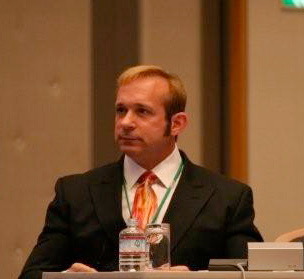Scientific Program

Eric A Strom
University of Texas, USA
Title: Proton accelerated par al breast irradia on (APBI) has an excep onal pa ent sa sfac on proï¬ l
Biography:
Eric A. Strom is the Professor of Radia on Oncology, UT M.D. Anderson Cancer Center, Houston, Texas, USA. He is the senior member of the breast sec on of a group which treats over 1000 pa ents annually. He is considered as a full me clinician, his academic output has been primarily driven by issues that arise in the day-to-day treatment of pa ents with radiotherapy for their breast cancer. Author of over 175 publica ons, areas of his interest include locally advanced and locally recurrent breast cancer, integra on of reconstruc on and radia on, cardiac protec on during radiotherapy, cura ve treatment of oligometasta c breast cancer and proton APBI. As an educator in the largest radia on oncology training program in the US. He believes that the best outcomes come from a en on to the details of radia on planning and delivery. He is dual board cer ï¬ ed in both Internal Medicine and in Radiology – Radia on Oncology and a Fellow of the American College of Radiology.
Abstract
Introduc on: Accelerated par al breast irradia on has been advocated due to its favorable schedule and targeted treatment volume. Proton-based APBI is non-invasive and dosimetrically superior to other forms of APBI in protec ng non-target structures. We reviewed our ini al experience with proton APBI to assess pa ent experience factors. Methods: 150 sequen al pa ents were treated with mul beam proton APBI on a prospec ve protocol and 141 pa ents with a minimum six month follow-up were available for pa ent reported cosmesis, quality of life and nonreimbursed personal costs. Pa ent surveys were taken at baseline, end of radia on, two weeks, six weeks, six months, and every six months therea er through three years of follow-up. Pa ent selec on ï¬ t the ASTRO consensus criteria as “acceptable” or “cau onary” for treatment with APBI. The tumorectomy cavity plus a 1.5 cm clinical target expansion was treated to 34 Gy in 10 frac ons, twice daily, over ï¬ ve day’s me as we have reported elsewhere. At the comple on of treatment, pa ents were asked to assess the impact radia on therapy treatment had on their daily life including me spent undergoing treatment, me away from work, and out-of-pocket expenses experienced during the radia on treatment. Data analysis was conducted in October 2018. Findings: At a median follow-up of 30 months (range: 6-82) all 141 pa ents are alive and there are no local recurrences. There were 74 le breast cancers treated and 67 right breast cancers
and the median age of the pa ents at the me of treatment was 68 (range: 45-85). 20 pa ents underwent wide local excision (WLE) only, 4 pa ents WLE and axillary dissec on and 117 underwent WLE and sen nel lymph node biopsy (SNLB). Histology breakdown included DCIS: 30, invasive ductal: 94, invasive lobular: 13, Mucinous: 1, papillary: 1, and carcinoma NOS: 2. The estrogen receptor was posi ve in 130/141 pa ents, nega ve: 8, and unknown: 3. Pa ent reported symptoms in the treated breast included 3 episodes of infec on, and 4 transient episodes of moderate to severe pain recorded. There were no grade 3 toxici es, speciï¬ cally no grade 3 radia on derma s. Figure 1 shows pa ent sa sfac on as a func on of me using a 5-step scale from “totally dissa sï¬ ed” to “totally sa sï¬ ed”. 139 pa ents recorded their es mated me receiving treatment with a mean of 10 hours (SD+/-4.3 hours). 135 pa ents es mated their out of pocket expenses during radiotherapy with a median of $700 and interquar le range of $100-1500. Since many pa ents do not live within commu ng distance of our facility, these expenses likely include lodging for the week of treatment. For the 43 pa ents currently employed during their treatment the median me away from work was 5 days (interquar le range 2-5).
- Cell Therapy
- Cancer cell
- Gene Therapy
- Genetic Engineering.
- Bioprocess
- Allotransplantation
- Adoptive Cell Therapy
- Embryonic Stem Cell
- Cancer Immunotherapy
- Molecular biology
- pharmacology
- Stem Cell Therapy

